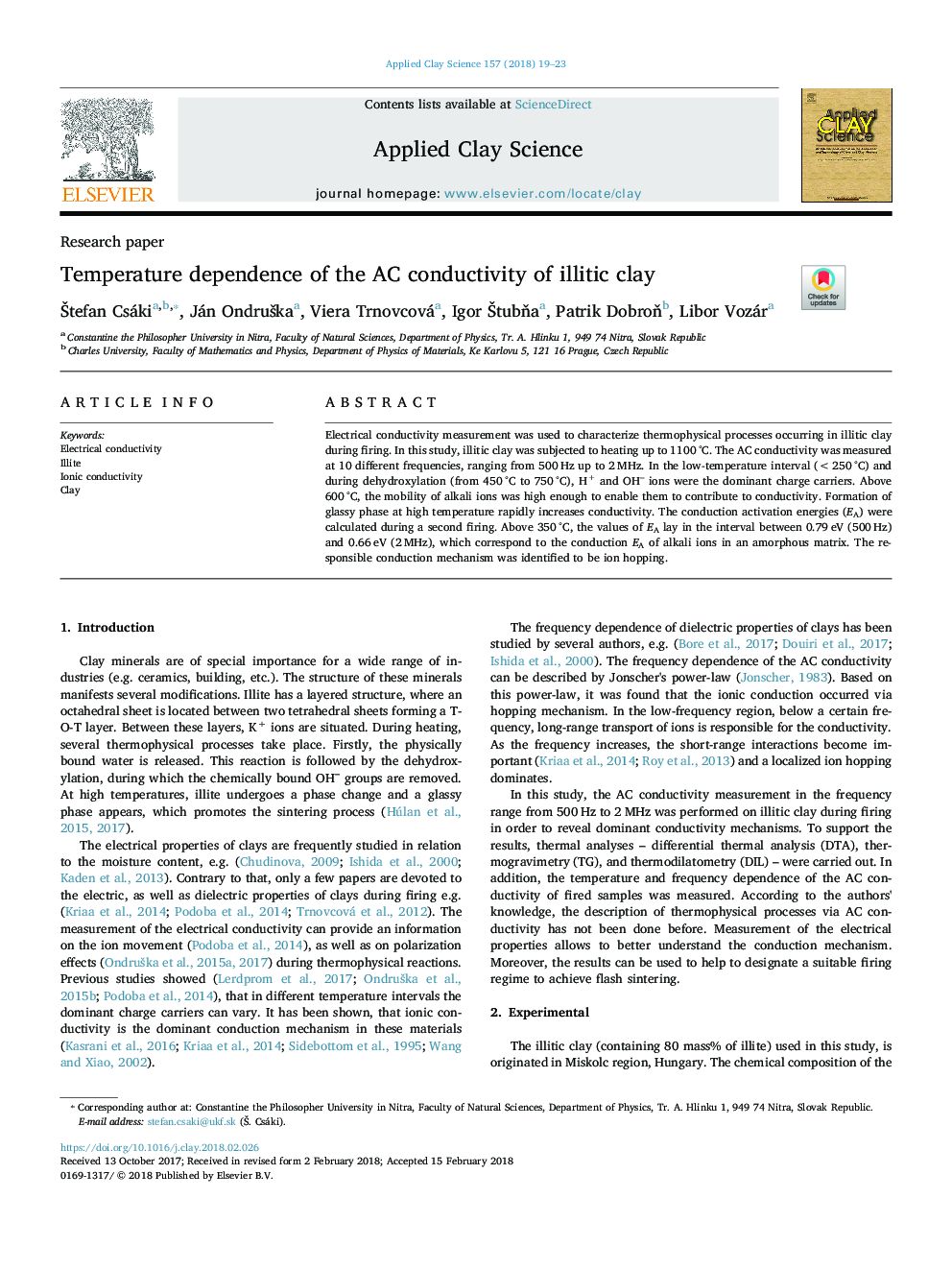| Article ID | Journal | Published Year | Pages | File Type |
|---|---|---|---|---|
| 8045987 | Applied Clay Science | 2018 | 5 Pages |
Abstract
Electrical conductivity measurement was used to characterize thermophysical processes occurring in illitic clay during firing. In this study, illitic clay was subjected to heating up to 1100â¯Â°C. The AC conductivity was measured at 10 different frequencies, ranging from 500â¯Hz up to 2â¯MHz. In the low-temperature interval (<250â¯Â°C) and during dehydroxylation (from 450â¯Â°C to 750â¯Â°C), H+ and OH- ions were the dominant charge carriers. Above 600â¯Â°C, the mobility of alkali ions was high enough to enable them to contribute to conductivity. Formation of glassy phase at high temperature rapidly increases conductivity. The conduction activation energies (EA) were calculated during a second firing. Above 350â¯Â°C, the values of EA lay in the interval between 0.79â¯eV (500â¯Hz) and 0.66â¯eV (2â¯MHz), which correspond to the conduction EA of alkali ions in an amorphous matrix. The responsible conduction mechanism was identified to be ion hopping.
Related Topics
Physical Sciences and Engineering
Earth and Planetary Sciences
Geochemistry and Petrology
Authors
Å tefan Csáki, Ján OndruÅ¡ka, Viera Trnovcová, Igor Å tubÅa, Patrik DobroÅ, Libor Vozár,
